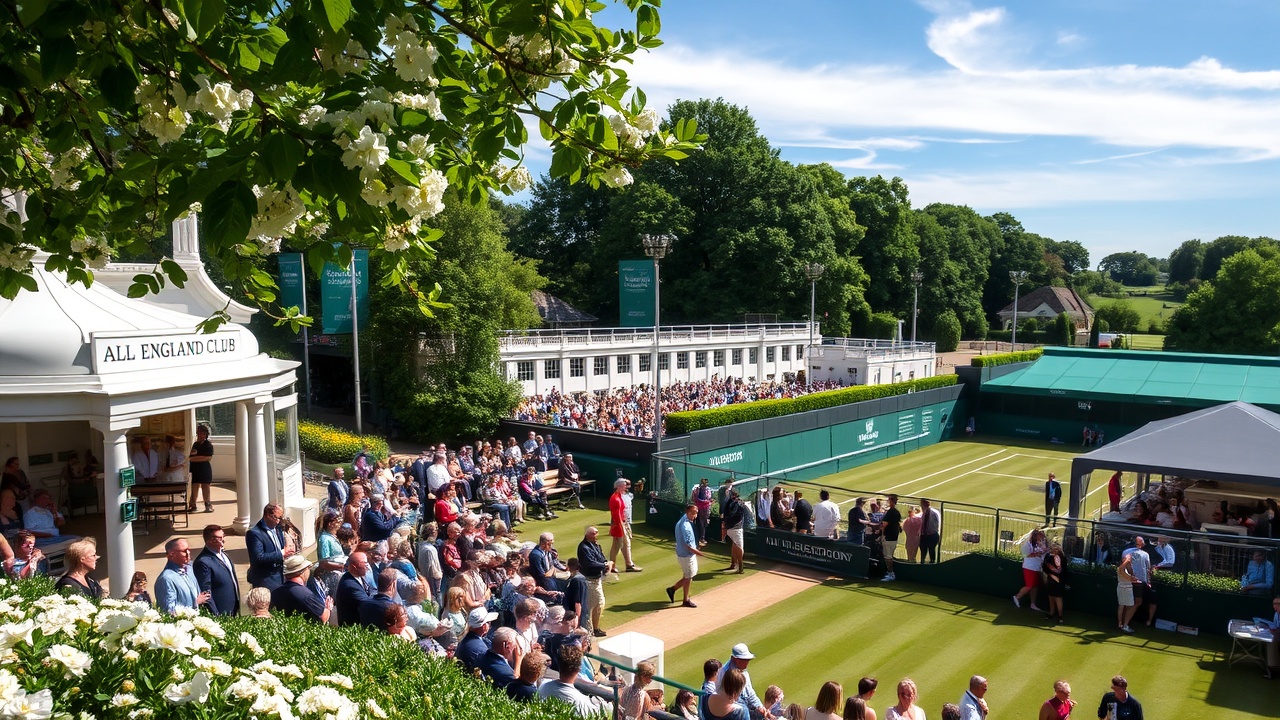Wimbledon Expansion Efforts Endorsed by High Court
Wimbledon has received a significant endorsement for its expansion efforts after a UK High Court revealed on Monday that the General London Assembly’s (GLA) decision to approve planning for additional courts in September was lawful. The ruling by Mr. Justice Saini came during a judicial review, discounting objections from local residents who raised concerns about the GLA’s approval for constructing 39 new grass courts. Notably, this plan includes an 8,000-seat stadium court to be developed on the site of the former Wimbledon Park golf course.
Background of the Expansion
The All England Lawn Tennis Club (AELTC), which organizes the Wimbledon Championships, originally acquired the Wimbledon Park golf course land from Merton Council in 1993 for £5.2 million ($6.6 million). They further expanded their holdings by purchasing the Wimbledon Park golf club in 2018 for £65 million, a buyout that resulted in a payout of £85,000 to each member of the golf club whose lease was set to expire in 2041.
Legal Challenges and Community Response
In December 2024, three months after the GLA’s initial approval, the Save Wimbledon Park (SWP) campaign group hired legal counsel to contest this decision, while the AELTC concurrently signaled its willingness to take their plans to court to preempt possible challenges. By January, SWP had formally announced a legal battle against the AELTC’s expansion, which the club asserts is essential for maintaining competitive parity with the other three Grand Slam events held in Australia, France, and the United States.
Currently, Wimbledon is unique among the Grand Slam tournaments as it hosts its qualifying matches off-site. In a recent media briefing, AELTC chair Deborah Jevans emphasized the urgency of the expansion, particularly as rival tournaments effectively integrate spectator events throughout their entire schedules, including charity functions during the qualifying rounds.
Public Opposition and Environmental Concerns
During the second week of this summer’s Wimbledon tournament on July 8 and 9, the High Court considered arguments from both sides. Outside the court, hundreds of protestors demonstrated against the expansion, expressing worries that the project would harm the local environment and cost the AELTC approximately £200 million. Christopher Coombe, director of SWP, pointed out that the ruling could set a dangerous example for future developments on protected green belt and public spaces across London and the UK.
Coombe also invited the AELTC to engage in dialogue aimed at resolving the conflict that has persisted for four years. According to a statement from SWP, they will seek to protect the future of Wimbledon Park, noting that when the AELTC acquired the golf course land, they agreed to a covenant restricting its use to leisure, recreational activities, or open space only. The belief that the AELTC’s current proposals violate this covenant has become a central issue in the opposition.
Future Developments and Community Engagement
This legal hurdle remains to be addressed, with the next related hearing scheduled for January 2026 after an expedited court appeal. Nonetheless, the decision bolsters the view of Jules Pipe, London’s deputy mayor for planning, who noted at the September hearing that the benefits of the proposed changes would surpass any associated harm. Sadiq Khan, the Mayor of London, previously stepped back from involvement three years ago after indicating support for the expansion plans.
On social media, Khan celebrated the High Court’s decision, stating it would solidify Wimbledon’s status as the pinnacle of tennis and London as a leading sports city, promising economic, social, cultural, and environmental advantages for the borough and the wider region. AELTC’s Jevans expressed satisfaction with the court’s dismissal of the challenge against the GLA’s decision, highlighting that the new development would create a dedicated venue for the Wimbledon qualifying competition and offer 27 acres of new parkland for public enjoyment, previously a private golf course for over a century. Jevans also indicated that while they have actively communicated with the community, concerning over 10,000 individuals engaging with their plans, the anticipated opening of the new courts is projected for the 2030s.




